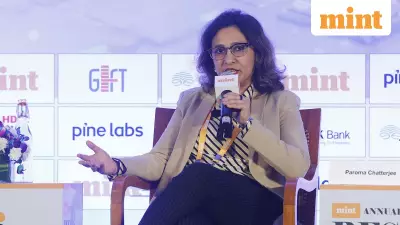
As the financial year draws to a close, millions of Indian investors face the perennial dilemma: where to park their hard-earned money to save taxes under Section 80C while ensuring healthy returns? The three most popular options—Equity Linked Savings Schemes (ELSS), Public Provident Fund (PPF), and Fixed Deposits (FDs)—each offer unique advantages and drawbacks.
The Triple Threat of Tax-Saving Instruments
ELSS: The Growth Champion
ELSS funds have emerged as the favorite among young, risk-tolerant investors seeking superior returns. With the shortest lock-in period of just three years among Section 80C options, ELSS provides exposure to equity markets while offering tax benefits. However, this comes with market-linked risks that can't be ignored.
PPF: The Safety Net
Public Provident Fund remains the go-to choice for conservative investors prioritizing capital protection. The current interest rate of 7.1% per annum, combined with sovereign guarantees and tax-free returns, makes PPF particularly attractive for long-term goals like retirement planning. The 15-year tenure, though extendable, requires significant commitment.
Fixed Deposits: The Traditional Favorite
Tax-saving FDs continue to lure investors with their predictability and fixed returns. With lock-in periods of five years and interest rates currently hovering around 6.5-7.5%, they offer stability in volatile markets. However, the interest earned remains fully taxable, which can significantly impact net returns for those in higher tax brackets.
Key Factors Every Investor Must Consider
Risk Appetite: ELSS carries market risk, while PPF and FDs offer relative safety. Your choice should align with your comfort with volatility.
Investment Horizon: ELSS requires 3 years, tax-saving FDs need 5 years, and PPF demands 15 years. Match the lock-in with your financial goals.
Tax Efficiency: While all three qualify for Section 80C deductions, their tax treatment differs significantly. ELSS and PPF enjoy EEE (Exempt-Exempt-Exempt) status, while FD interest is fully taxable.
Liquidity Needs: ELSS offers the quickest exit after the lock-in, while PPF has strict withdrawal limits. Partial withdrawals from FDs often attract penalties.
The Verdict: Which One Should You Choose?
For young investors with high risk tolerance seeking wealth creation: ELSS could be your best bet, given its potential for higher returns and shorter lock-in.
For middle-aged investors balancing growth and safety: A mix of ELSS and PPF might provide the perfect balance between equity exposure and debt security.
For retirees and ultra-conservative investors: PPF and tax-saving FDs offer the capital protection and predictable returns that align with lower risk appetites.
Remember, there's no one-size-fits-all solution. The ideal investment strategy depends on your age, financial goals, risk tolerance, and investment horizon. Many financial advisors recommend diversifying across these instruments rather than putting all your eggs in one basket.
As the March 31 deadline approaches, make an informed decision that not only saves taxes today but also builds wealth for tomorrow. Consult with a financial advisor if needed, but don't delay your investment decision until the last moment.





